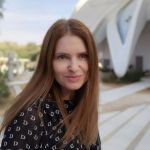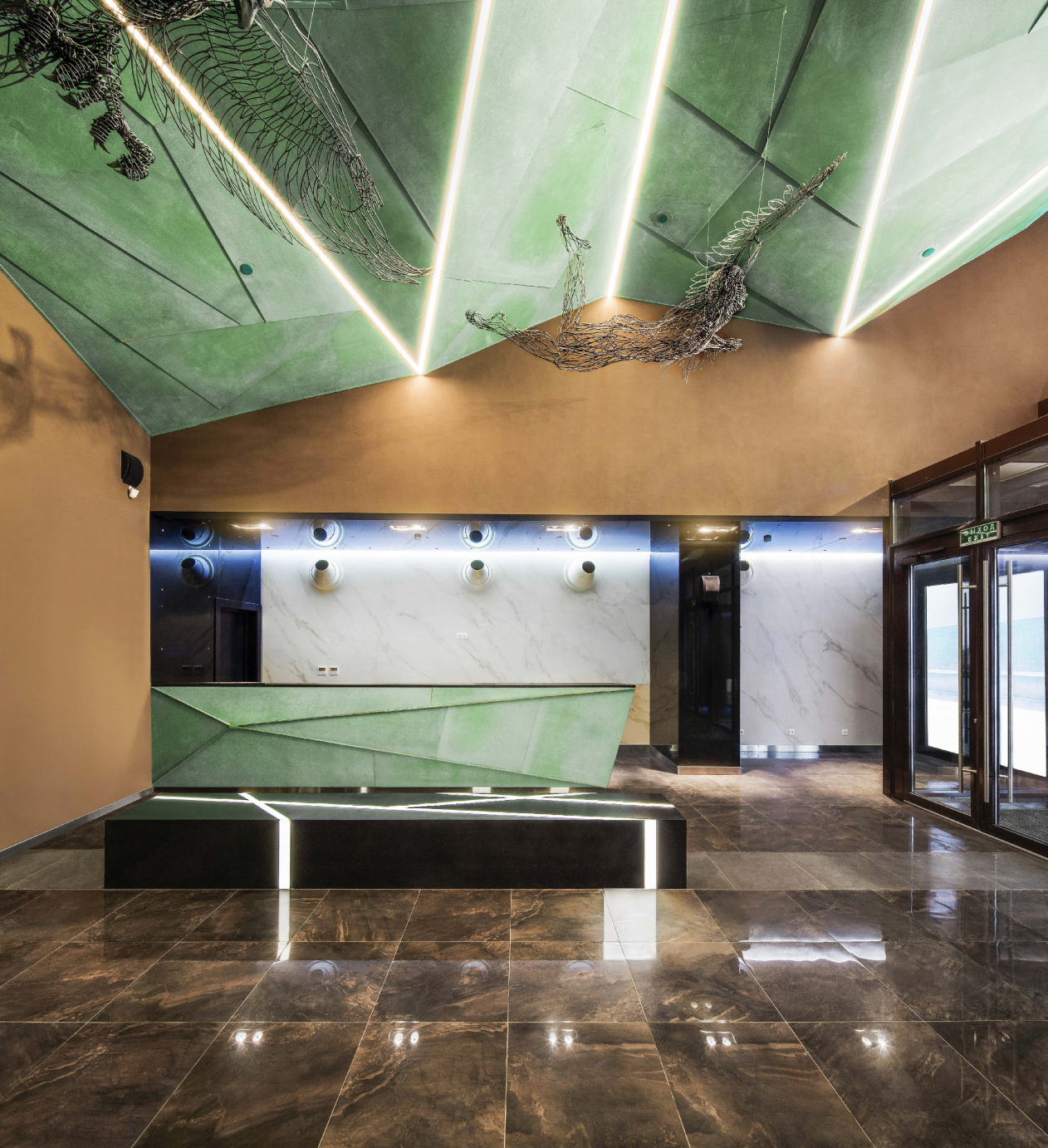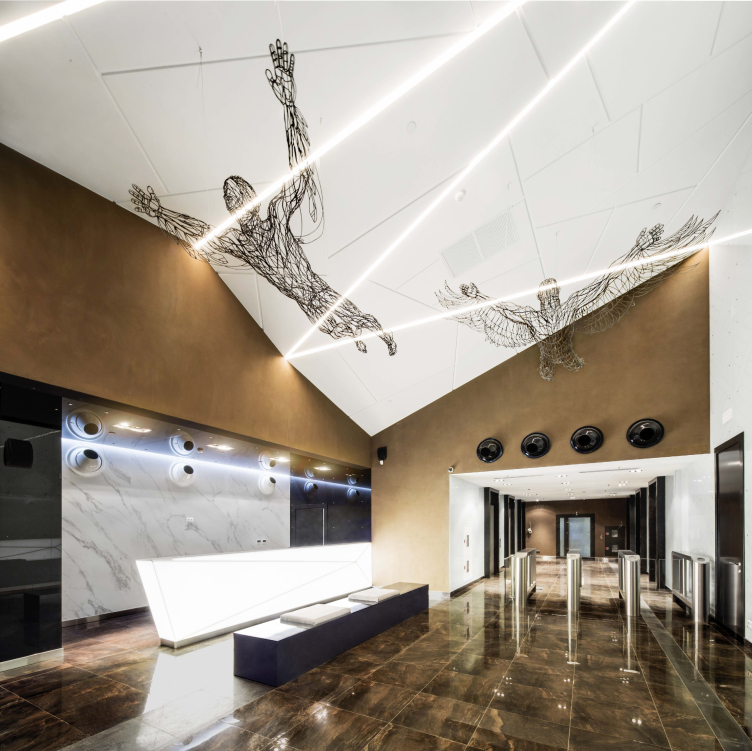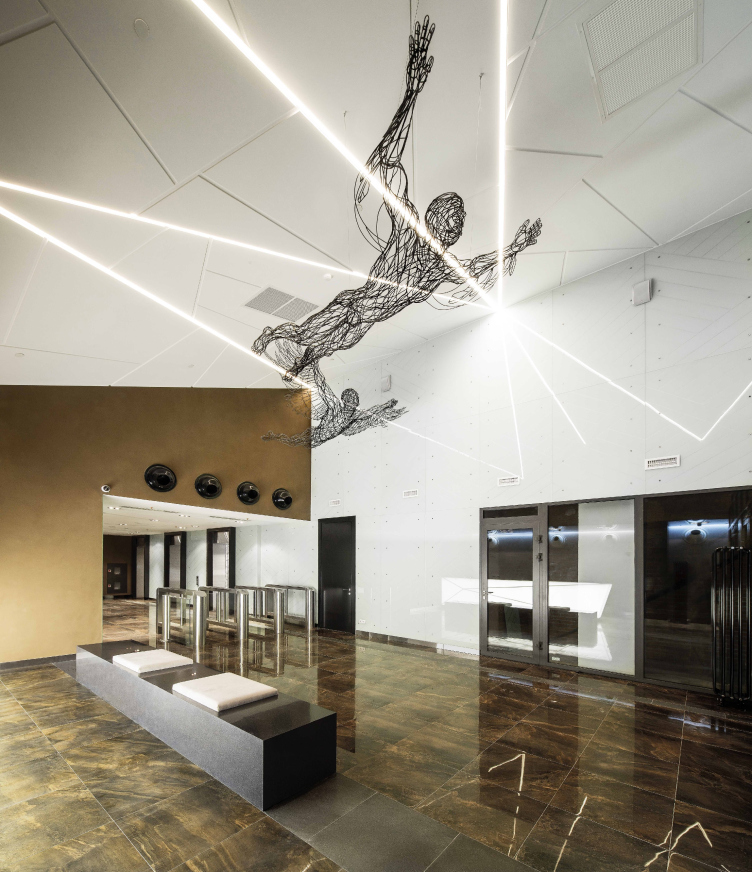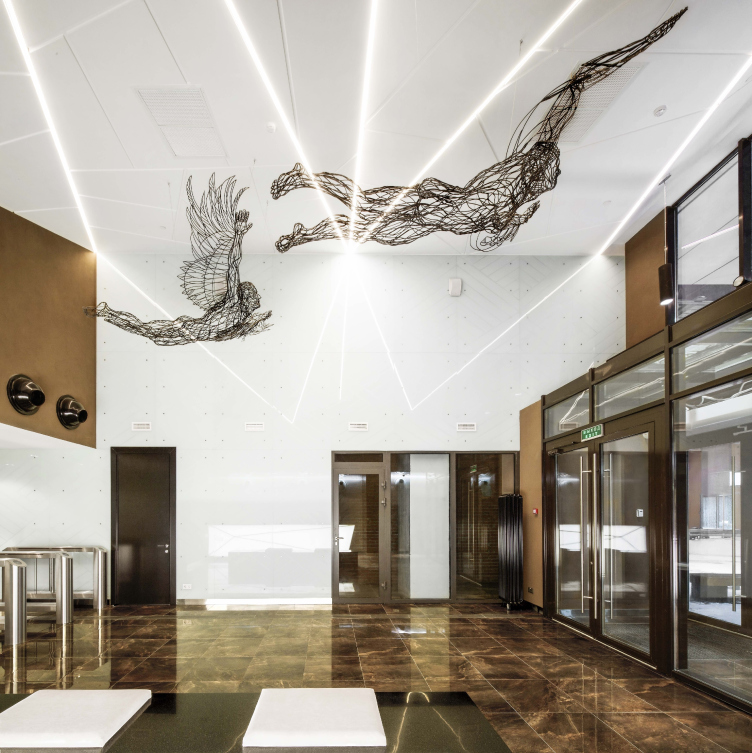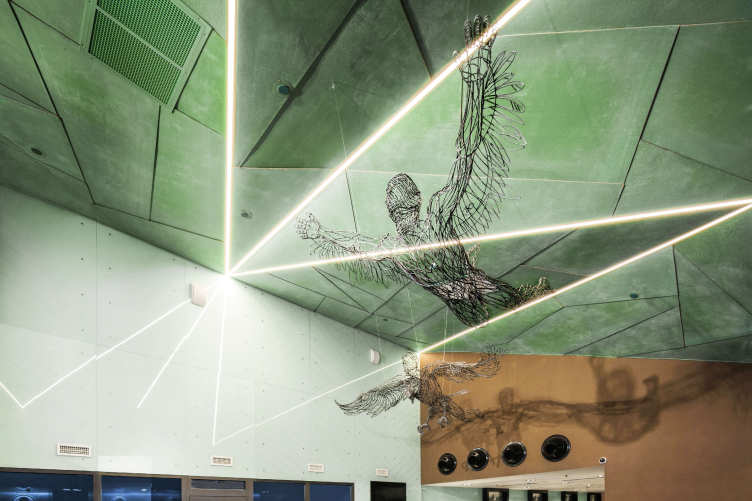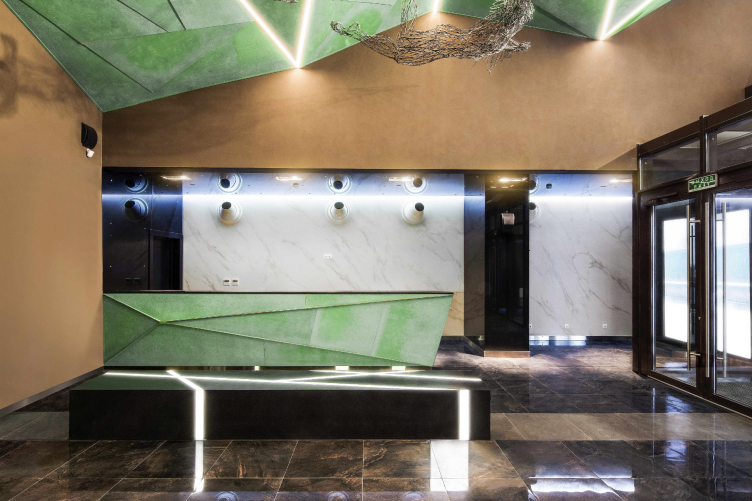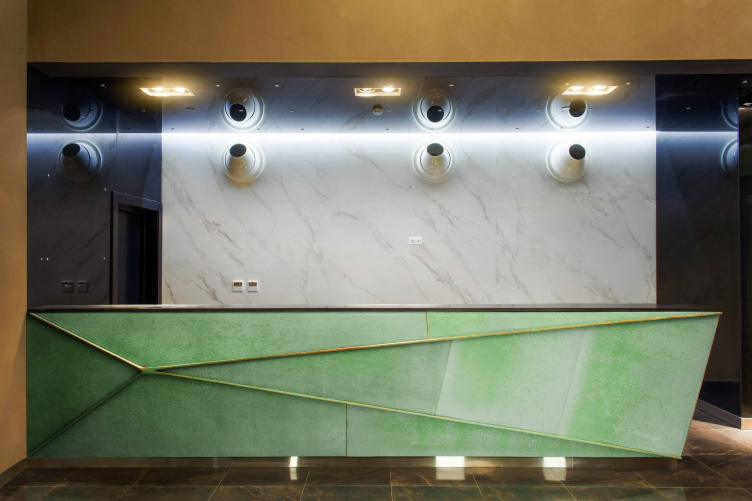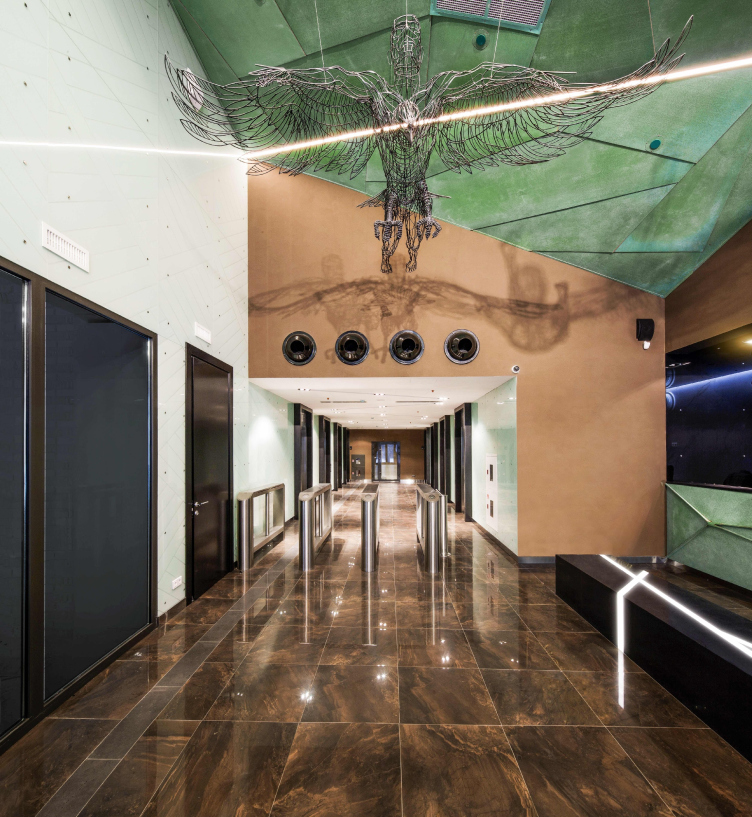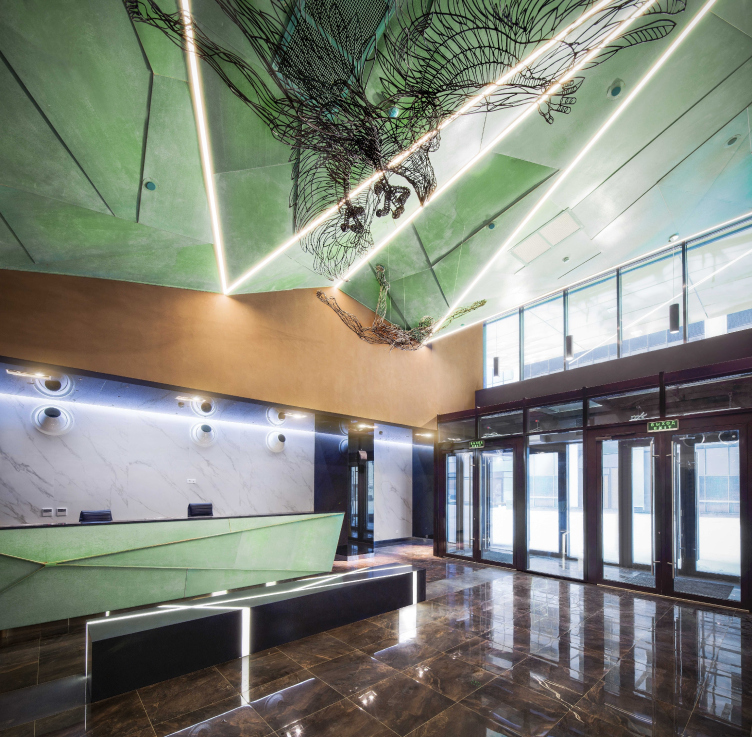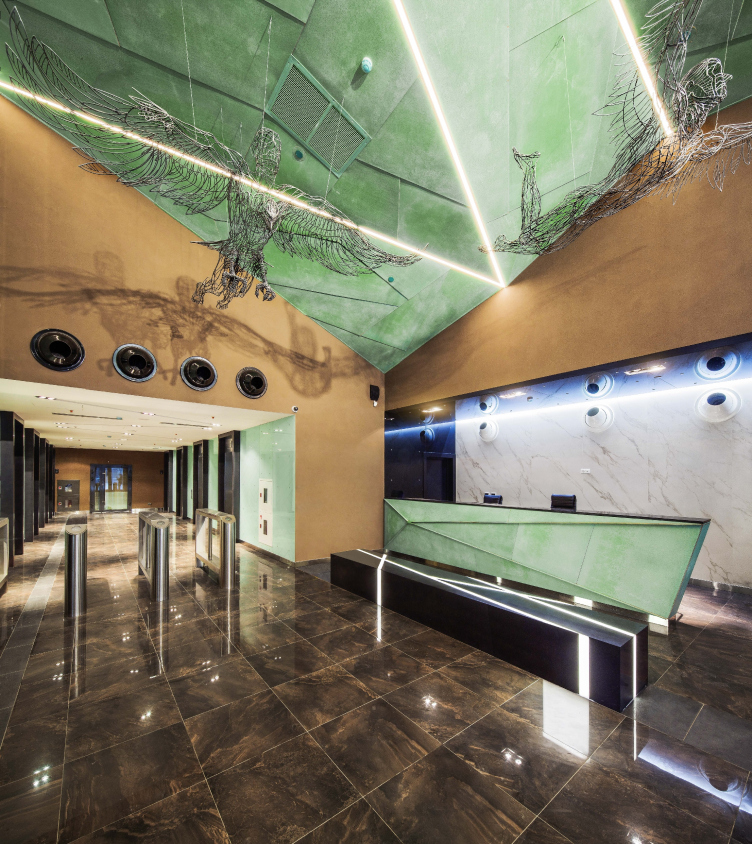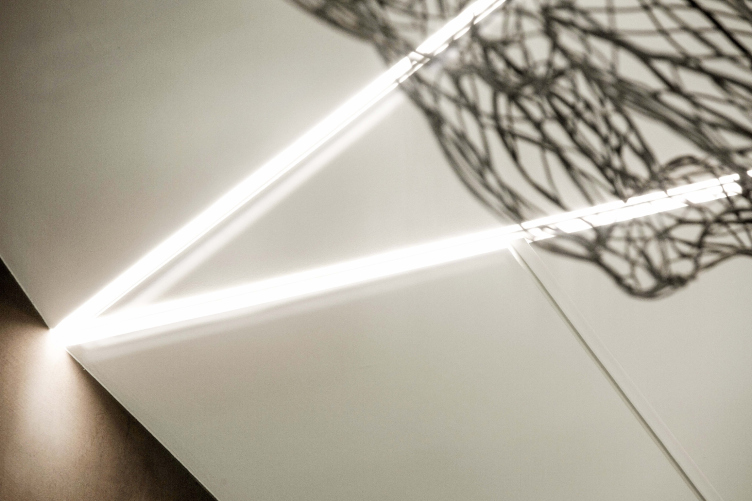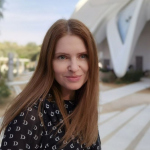The multifunctional complex "Savelovsky City" that is being built in Moscow's Butyrsky district upon the project SPEECH Bureau, has been handled by Т+Т Architects for a long time already. It all started in 2013 from the concept of developing its territory: the architects did a comprehensive survey of the current state of things, thought out the organization of the automotive and pedestrian flows, and came up with a detailed project of integrated territory organization - with open and permeable territories livened up by a whole number of landscape techniques together with the outdoor furniture that turns the surrounding spaces into a whole string of various little parks. The next step in the architects' work on "Savelovsky City" was the interiors of the entrance groups of the buildings of the first stage of construction - two already built twin towers, twenty stories each. Later on, as part of the second stage, the architects plan to build yet another office building and two forty-seven-story residential high-rises. Meanwhile, the landscaping proposals made by T+T are gradually getting implemented - and the entire once-semi-derelict district that formally is not yet part of the giant Industrial Park #11 is coming alive by degrees. The neighbors of "Savelovsky City" also reacted to the appearance of these green organized territories: at some places, the fences were removed, and at some places the closed yards were opened up to the city.
The entrance group of the multifunctional complex "Savelovsky City". The first tower © T+T Architects
The entrance group of the multifunctional complex "Savelovsky City". The second tower © T+T Architects
Approaching the two giant yet slender towers one least expects to see behind their doors what was actually designed for their lobbies - or, rather, was created for their lobbies because the end result looks indeed creative - by T+T Architects. According to the leader of the bureau Sergey Trukhanov, his own bravery of these design solution scares himself at times but still he had a great desire to oppose these bright interior solutions to the reserved architecture. "Our project turned out to be one of those rare examples where you just do not settle for any compromise, and we really did cut loose on this project" - Sergey Trukhanov shares.
The entrance group of the multifunctional complex "Savelovsky City" © T+T Architects
The entrance group of the multifunctional complex "Savelovsky City" © T+T Architects
The original task was promising nothing like this end result. As a matter of fact, the architects were required to decorate two small lobbies about 150 square meters each, unsophisticated rooms of regular shape with a double-height hall that bleeds into the stairway and elevator zone. The authors of the project were undaunted by the shortage of the square footage. Besides, impressing the visitors with the grandeur and magnitude in this case is hardly realistic; however, just as powerful wow-effect can be achieved by different means. One of them, for example, was turning the foyer into an art-gallery with fully-fledged museum exhibits and vivid samples of modern art.
The entrance group of the multifunctional complex "Savelovsky City" © T+T Architects
The entrance group of the multifunctional complex "Savelovsky City" © T+T Architects
In order to avoid overloading the small volume as it is, the architects decided very early on that the exhibits had to be suspended in such a way that they would draw the visitors' attention the moment they entered the lobby. Some brilliant and witty solution had to be found - for example, real-size human figures made of metal wire. The winged "athletes" (the pet name the architects gave to the figures) hovering under the ceiling are meant to symbolize the limitless possibilities of human mind, meant to saturate the entire space with its power, and become its main focus. The person who took up the implementing the unusual exhibits was a young sculptor from the city of Volgograd Vadim Kuleshov. Adding to the architects' idea a vision of his own, he created not just winged figures but a peculiar hybrid - a human being shown in the process of transformation: from his wire chest, a sharp-clawed eagle with a crooked evil beak springs out - something like Prometheus merging into one with his legendary bird of prey. Slightly "overstepping the mark", this theme, according to the sculptor's idea, embodies the inevitability of transforming of all earthly things, including buildings that, as the years go by, change their appearance and their function, as well as sometimes get a new life in a new capacity. Thus the theme of transforming the space became the main one for this project referring us, among other things, to the history of this place that turns from an old industrial park into a part of the modern city.
The entrance group of the multifunctional complex "Savelovsky City" © T+T Architects
The entrance group of the multifunctional complex "Savelovsky City" © T+T Architects
The entrance group of the multifunctional complex "Savelovsky City" © T+T Architects
The entrance group of the multifunctional complex "Savelovsky City" © T+T Architects
However, this interior cannot be by any means considered to be a neutral frame for the hovering wire figures. The differently designed entrance groups of both buildings fit in with a single conceptual idea. The most active are the ceilings with their zigzag relief. The jagged wave starts at the entrance door and, rolling softly, carries the visitor to the turnstiles. Subject to no geometric laws, its irregular shape distorts and transfigures the space of the foyer. A special part in achieving this effect is played by the light. Dissecting the ceiling, the slender rays of light accentuate the breaks of the surface.
The entrance group of the multifunctional complex "Savelovsky City" © T+T Architects
The entrance group of the multifunctional complex "Savelovsky City" © T+T Architects
The entrance group of the multifunctional complex "Savelovsky City" © T+T Architects
In each of the buildings, the 3D ceiling is echoed by the reception desk subjected to the same irregular geometry and executed in the same materials: in one of the foyers this is patinated copper, and in the other - foam-white gypsum plasterboard. The white interior looks lighter and airier than its malachite and copper counterpart. And, as for its reception desk, it is almost ethereal - it looks like some space-age object glowing from the inside. Across from both reception desks, laconic parallelepipeds stretch: in the "white" lobby - with pillows and couches, and in the "copper" one - with rays of light cutting through the plastic. One will not even figure out at once that this is just a waiting bench for the visitors.
The entrance group of the multifunctional complex "Savelovsky City" © T+T Architects
The entrance group of the multifunctional complex "Savelovsky City" © T+T Architects
The entrance group of the multifunctional complex "Savelovsky City" © T+T Architects
The walls and the ceiling, though lacking the jagged breaks, also look expensively attractive. The elevator halls are dominated by glass white panels with a dynamic pattern. Because this part of the entrance group is single-story, the materials and the color here are meant to visually expand the room. The same task is served by the bright light, many times reflected and refracted by the glass surfaces. In the reception zone, however, the walls are partially faced with panels of black glass which visually adds some "depth" to these surfaces. So, the choice of the materials and their rather unusual combinations play their own, possibly just as important, part in creating the wow-effect, resonating with the hovering sculptures, echoing their energy and supporting their movement. All this put together becomes the face of the new complex, a face unusual, dramatic, dynamic, and saturated with conceptual meanings. It cannot and it needn't be interpreted in one certain way once and for all - one could come up with a lot of ideas in response to the artist's gesture but these all will be the ideas of the viewer, not the artist's. But you enter the lobby and see a fantasy figure flying towards you which carries you from the world of square footage over to the world of controversial meanings and multilayered fantasies. Chances are - some of the guys who will rent offices here will think that these figures have direct reference to them... No offense, mates...
